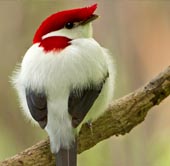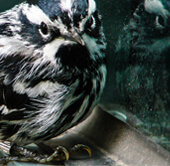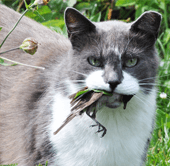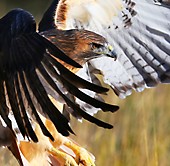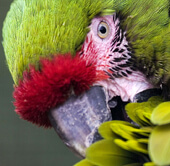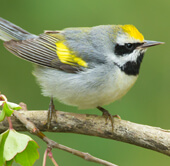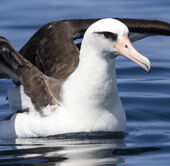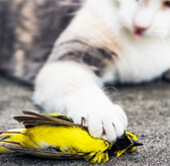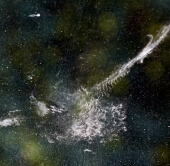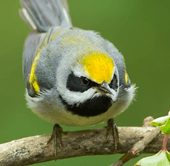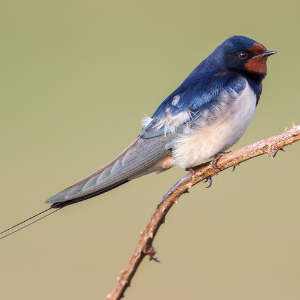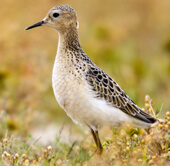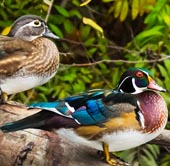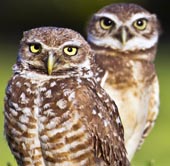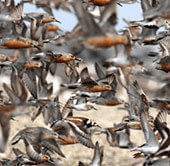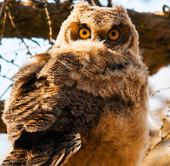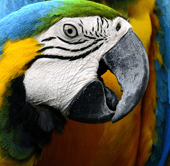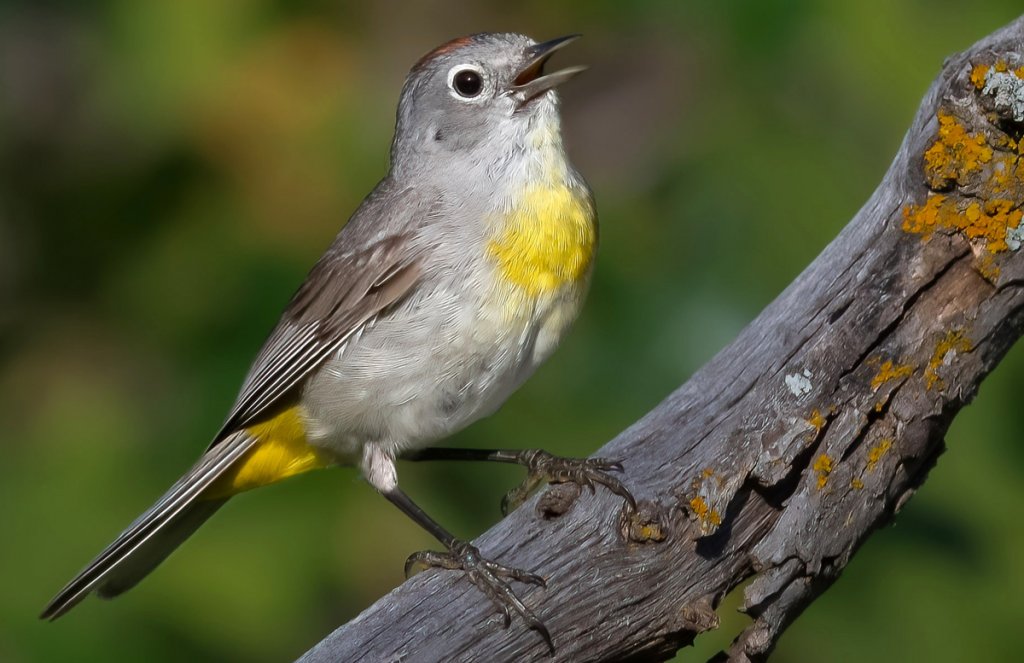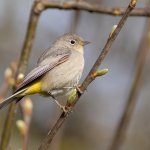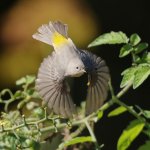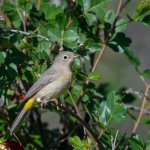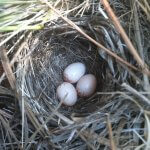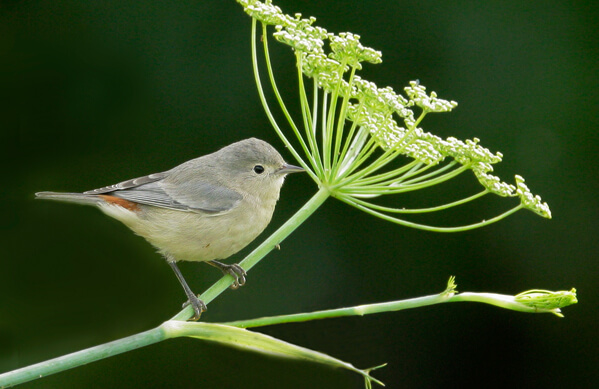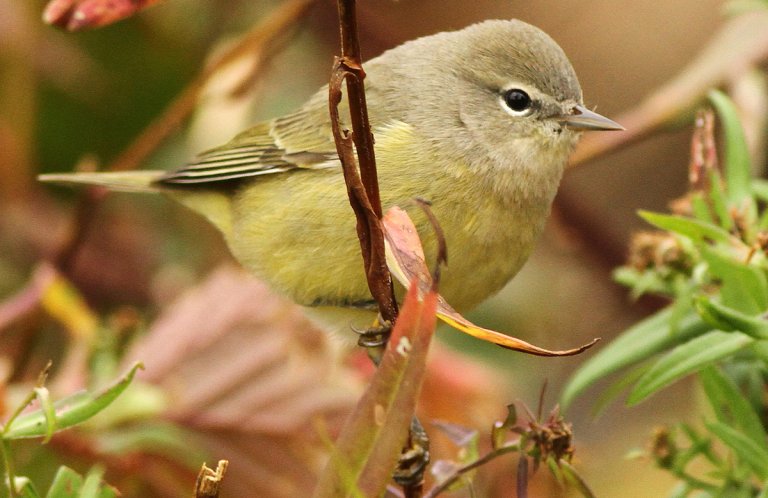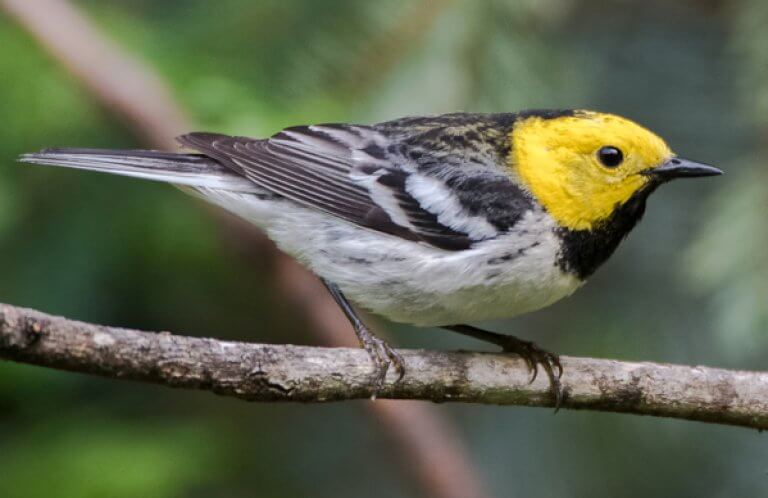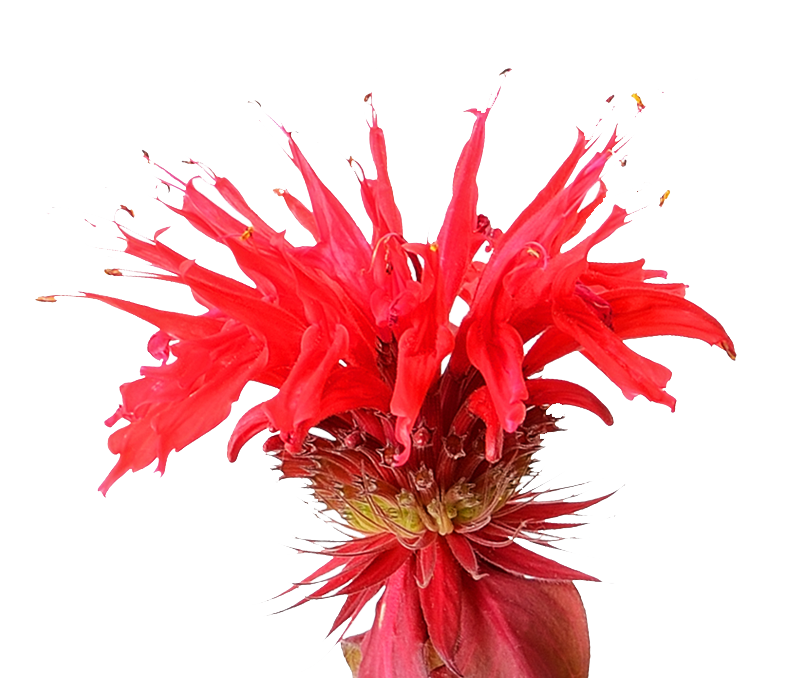About the Virginia's Warbler
The Virginia's Warbler is a small, pale-gray warbler of arid, brushy woodlands and shrubby canyons of the western United States. Key ID features are the lemon-yellow breast, rump, and undertail and brick red crown patch, which is usually partly hidden. A thin white eye ring gives this bird a startled expression. Females and immatures are slightly duller, with less yellow on the breast.
This species is closely related to the more widespread Nashville Warbler, and some scientists consider the two a superspecies — related species that evolved in isolation from one another and remain separated by geographical barriers. The two are also closely related to the Lucy's Warbler, a species found further south in the Sonoran Desert.
The Virginia's Warbler is actually named for a person, not after the state. This was a fairly common custom in the 19th century, when newly-discovered bird species were often named in honor of a naturalist, scientist, or one of their relatives or patrons. In this case, the name “Virginia's Warbler” acknowledged Virginia Anderson, the wife of army surgeon Dr. W.W. Anderson, who first collected this bird. Other bird species named for women include the Anna's Hummingbird and Grace's and Blackburnian Warblers.
Songs and Sounds
The Virginia Warbler sings a series of loose, high-pitched notes with an up or down-slurred ending. Only males are known to sing. The call note is a high-pitched chik.
Song:
Call:
Breeding and Feeding
Although quite active, the Virginia's Warbler may be hard to see, as it tends to feed within the interior areas of trees and shrubs. It can often be seen pumping its long tail as it moves about.
Like many birds, the Virginia's Warbler is seasonally monogamous. The male guards his mate during nest-building, egg-laying, and incubation, sometimes feeding her while she broods. He also defends the area around the nest from predators.
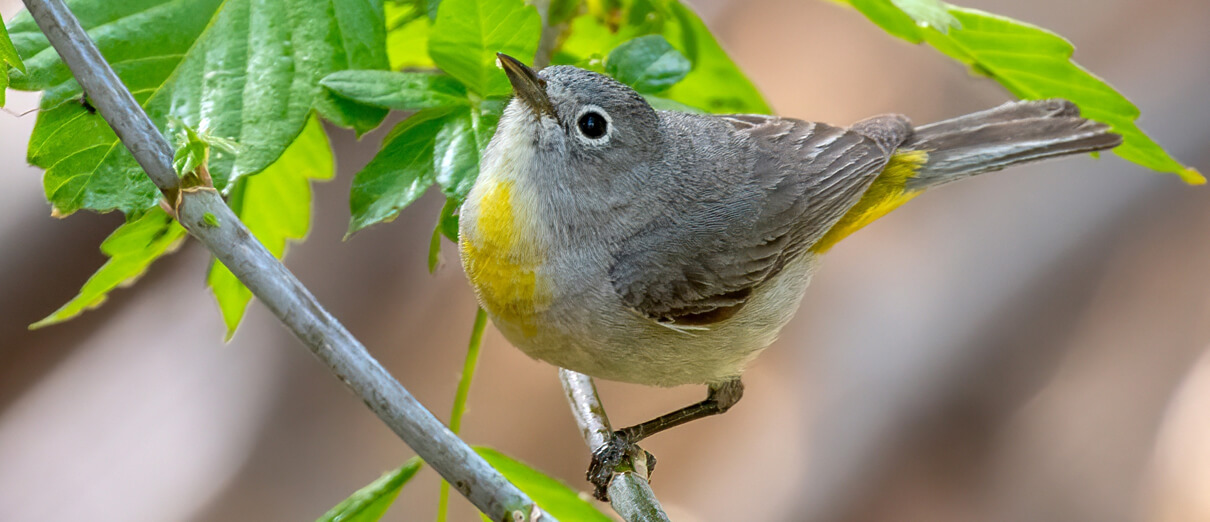
Both sexes participate in selecting a nest site, usually on a steep slope, the nest is concealed on the ground amid dead leaves and tufts of grass, at the base of a shrub or small tree. The female builds the cup-shaped nest of moss, lichen, grass, and strips of bark, lined with softer vegetation and hair.
The female Virginia's Warbler lays a clutch of 3–5 eggs, which she incubates for approximately two weeks. Both parents feed the young, which fledge in another two weeks. The young birds remain dependent on their parents for food for another several weeks. This species only raises one brood per season. It is sometimes parasitized by Brown-headed Cowbirds.
The Virginia's Warbler feeds low in trees and shrubs and close to the ground, gleaning insects from foliage and branches or from the ground. After the breeding season concludes it may forage in mixed-species groups that include Orange-crowned and Black-throated Gray Warblers.
Region and Range

The Virginia's Warbler has a patchy breeding distribution throughout the western United States. It may be found from Nevada and eastern California east to New Mexico and west Texas, and from southern Idaho and Wyoming south to the Mexican border in Arizona and New Mexico. It winters along the Pacific slope of southern Mexico.
This warbler is found in mixed deciduous/coniferous habitats, primarily pinyon-juniper and oak forest with dense understory, especially in steep canyons and along scrubby hillsides. In winter, it inhabits dry thorn and tropical deciduous forests.
Conservation
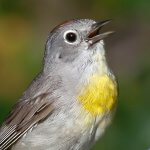
Help support ABC's conservation mission!
The Virginia's Warbler is included on the Partners in Flight Yellow List of declining species due to its small range and population size. Its habitat is threatened by clearing for agriculture and firewood cutting.
Changing climatic conditions across the southwestern United States have led to persistent drought and bark beetle infestations, which may also destroy suitable habitat for this species.
Controlled burning to remove thick forest understory may actually have a negative impact on the Virginia's Warbler, decreasing potential nest sites and foraging opportunities.
Get Involved
Policies enacted by the U.S. Congress and federal agencies, such as the U.S. Fish and Wildlife Service, have a huge impact on migratory birds. You can help shape these rules for the better by telling lawmakers to prioritize birds, bird habitat, and bird-friendly measures. To get started, visit ABC's Action Center.
Living a bird-friendly life can have an immediate impact on migratory birds in the United States. Doing so can be as easy as adding native plants to your garden, avoiding pesticides, and keeping cats indoors. To learn more, visit our Bird-Friendly Life page.
American Bird Conservancy and our Migratory Bird Joint Venture partners have improved conservation management on more than 8.5 million acres of U.S. bird habitat — an area larger than the state of Maryland — over the last ten years. That's not all: With the help of international partners, we've established a network of more than 100 areas of priority bird habitat across the Americas, helping to ensure that birds' needs are met during all stages of their lifecycles. These are monumental undertakings, requiring the support of many, and you can help by making a gift today.

